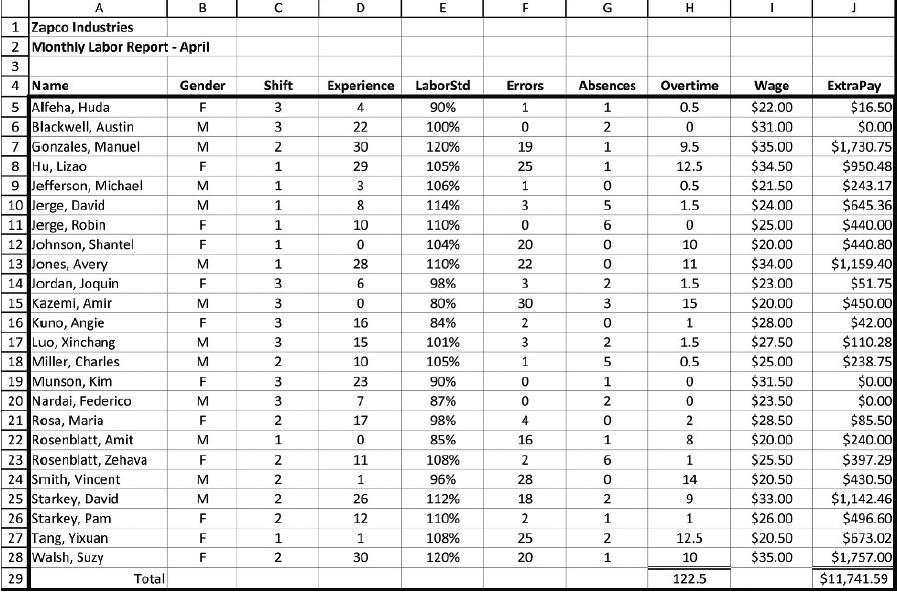What are you people doing? exclaimed an exacerbated CEO Dawn Jacobs as she stormed into the production
Question:
“What are you people doing?” exclaimed an exacerbated CEO Dawn Jacobs as she stormed into the production meeting. “Wage costs were nearly $12,000 over budget last month, and defect numbers are soaring. Output seems pretty good, but I see extra workers staying late all the time fixing defects. Surely those folks would rather be enjoying time with their families than sticking around here. Let’s take a look at the numbers and get rid of the deadbeats.” Production Manager Juan Velasquez put last month’s (22- day) worker data on the viewing monitor. Zapco Industries runs 3 shifts employing 8 line workers per shift. Workers range in experience from 0 to 30 years with the company. The union contract sets wages at $20.00 per hour plus $0.50 per hour per year of experience. Workers are given a production target each day. If they exceed that target, they receive a pay bonus based on the percentage completed above target. For example, a worker achieving a labor standard of 110% would receive 10% higher pay. Workers missing the target do not receive a salary deduction. In addition, as part of its total quality management program, each worker is responsible to remain at work after the shift ends and fix his or her own defects. The labor standard for error correction is 30 minutes. “What is this telling us, Juan?” asked Dawn. “Should we start by firing everyone that cost us more than $500 extra last month? Or should we get rid of those averaging more than one error per day?” “It may not be that simple,” replied Juan. “Some of our most experienced workers have a higher wage rate. So naturally their bonuses should be higher as well.” “Remind me,” directed Dawn. “How do we penalize people for producing defects?” “They have to fix those after hours,” responded Juan. “We don’t have to pay them for that, do we? After all, the mistakes are their fault,” said Dawn. Juan replied, “That may be true, but the union contract absolutely specifies time-and-a-half pay for overtime work.” Shift 1 Line Manager Mario Reyes added, “Look at Suzy Walsh. She made a lot of errors last month but was also extremely productive. And we paid her an extra $1,757 last month. I wonder if something fishy is going on.” “Several things may be happening with these workers,” noted Dawn. “It’s too hard to tell from looking at all the data at once. Mario, as our analytics expert, please create some pivot tables to determine the average performance and average monthly errors split in the following ways: (1) by shift, (2) by experience (in blocks of 5 years each), (3) by number of absences, and (4) by gender. Let’s dig deeper into this.”
Discussion Questions
1. What insights are obtained after creating the four pivot tables requested by Dawn?
2. How effective is the current incentive system at Zapco?
3. What recommendations should be made for the company?
Step by Step Answer:

Operations Management Sustainability And Supply Chain Management
ISBN: 9780137476442
14th Edition
Authors: Jay Heizer, Barry Render, Chuck Munson





